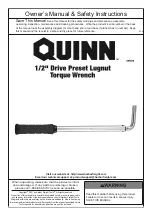
P
P
a
a
g
g
e
e
1
1
4
4
o
o
f
f
3
3
8
8
I
I
N
N
S
S
T
T
R
R
U
U
C
C
T
T
I
I
O
O
N
N
M
M
A
A
N
N
U
U
A
A
L
L
C
C
D
D
N
N
M
M
-
-
s
s
e
e
r
r
i
i
e
e
s
s
C
C
O
O
U
U
P
P
L
L
I
I
N
N
G
G
/
/
D
D
E
E
C
C
O
O
U
U
P
P
L
L
I
I
N
N
G
G
N
N
E
E
T
T
W
W
O
O
R
R
K
K
S
S
(
(
C
C
D
D
N
N
s
s
)
)
SECTI ON 4 -
PRODUCT INSTALLATION
1912 1 E l T o ro R d
●
Si l vera do, Ca lifo rni a 9 26 76
●
(9 49) 459 -96 00
●
co m-p o wer. com
Rev072518
4
4
.
.
0
0
P
P
r
r
o
o
d
d
u
u
c
c
t
t
A
A
p
p
p
p
l
l
i
i
c
c
a
a
t
t
i
i
o
o
n
n
4
4
.
.
1
1
C
C
D
D
N
N
T
T
h
h
e
e
o
o
r
r
y
y
The CDN M-series Coupling/Decoupling Networks (CDNs) are specifically
designed for immunity to conducted disturbances testing as per IEC 61000-4-6.
CDNs provide a standardized common mode impedance for the EUT power lines
which is independent of the external power line impedance. The RF test signal is
injected via the RF port of the CDN, and is coupled onto the EUT power lines
(directly for the PE conductor, and capacitively for all other conductors) through
an effective resistance of 100 ohms. Refer to Figure 7 below.
F
F
i
i
g
g
u
u
r
r
e
e
7
7
-
-
M
M
-
-
s
s
e
e
r
r
i
i
e
e
s
s
C
C
D
D
N
N
S
S
c
c
h
h
e
e
m
m
a
a
t
t
i
i
c
c
a
a
s
s
d
d
e
e
f
f
i
i
n
n
e
e
d
d
i
i
n
n
I
I
E
E
C
C
6
6
1
1
0
0
0
0
0
0
-
-
4
4
-
-
6
6
Once coupled onto the power conductors within the CDN, the RF path to the EUT
is unimpeded, while the RF path to the AE port is impeded by common-mode
chokes and decoupling capacitors, thereby protecting the AE equipment.














































